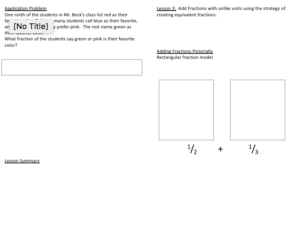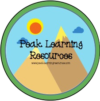 At some point, you will probably be asked to implement a prescribed curriculum. If you’re lucky, you’ll get some training. Chances are, you’ll be handed a box full of resources and will be left to sort them out on your own. Hopefully, you’ll have experienced teammates that have made sense of the complex components provided. In my experience, I’ve been handed EveryDay Math, Eureka Math, Lucy Calkins, and FOSS with no training and here’s what I’ve learned. Hopefully, this will help you wade through, make sense of it all, and provide students with a coherent and meaningful learning opportunity.
At some point, you will probably be asked to implement a prescribed curriculum. If you’re lucky, you’ll get some training. Chances are, you’ll be handed a box full of resources and will be left to sort them out on your own. Hopefully, you’ll have experienced teammates that have made sense of the complex components provided. In my experience, I’ve been handed EveryDay Math, Eureka Math, Lucy Calkins, and FOSS with no training and here’s what I’ve learned. Hopefully, this will help you wade through, make sense of it all, and provide students with a coherent and meaningful learning opportunity.
- Implement the curriculum with fidelity for at least the first unit. I’ve seen teachers leave out certain aspects of a curriculum that was essential such as the math games in EveryDay Math. Students didn’t achieve and understand the math as well as they should have because the games were integral and teachers thought they took much time and weren’t that important. You have to practice the curriculum in its entirety before you can truly know what to leave out if anything.
- Take in the information in small chunks if time allows. Begin by making an outline or data table of the units, in order, and the expected duration of each unit including the lessons and the lesson names or content. If you have a year overview plan, add this information. It’s helpful to create this yourself.
- Take the first unit and determine what are the common unit and lesson components and create a graphic organizer for you to summarize each lesson. I’ve included a google doc link for the reading portion of LUCY CALKINS (please make a copy for yourself). For Eureka Math, I made an interactive notebook sheet for each lesson that included the application problem as the class warm-up. I created this in PowerPoint. I didn’t start this until the third Module but realized that students didn’t have anything to reference and parents were wanting something that helped them understand what was going in class. That first year I was only one day ahead of the lessons
 but then the second year, I had everything ready to go and prep for math was little more than printing out the interactive notebook pages and briefly going over the lesson outline I had created. Please note that in my planning template, I placed the application problem at the beginning of class and used it as the class warm-up. Eureka Math Planning Template Also, the student debrief was built into the interactive notebook page I created. Sometimes I used a question from the program and sometimes I asked for a summary, reflection, or a question.
but then the second year, I had everything ready to go and prep for math was little more than printing out the interactive notebook pages and briefly going over the lesson outline I had created. Please note that in my planning template, I placed the application problem at the beginning of class and used it as the class warm-up. Eureka Math Planning Template Also, the student debrief was built into the interactive notebook page I created. Sometimes I used a question from the program and sometimes I asked for a summary, reflection, or a question. - Once you’re comfortable with the routine, mix it up a little. As the year progressed I incorporated a guided math style model to our 80-minute block for Eureka Math. Students would watch a video of the LESSON for homework, take notes in their interactive notebook and come to class to work through the lesson pages. I would combine some of the questions from the homework into a quiz every few lessons to ensure accountability and understanding. Groups for further instruction were then pulled for extra help.
- If possible, take a break from the curriculum to enjoy an application project at the end of each unit. For example, after a narrative unit have the students participate in StoryCorps or create a narrative on Story Jumper. Once after a fraction unit, my students planned their own bakery not only practicing some fraction skills but putting together the whole menu, naming their bakery, designing the logo, and pitching their business plan to a panel.
- If your prescribed curriculum is not sequential, you and your teammates can split up the curriculum. In science, if you’re teaching from FOSS, you can teach one unit, your teammates teach the others and you rotate students. This would allow you to build in a PBL or an engineering challenge with your unit.
- Be patient and kind to yourself. It’s a lot to take on and can be overwhelming at times. Take a deep breath, slow down. Meditate on your happy place for a little while then get back to it.

